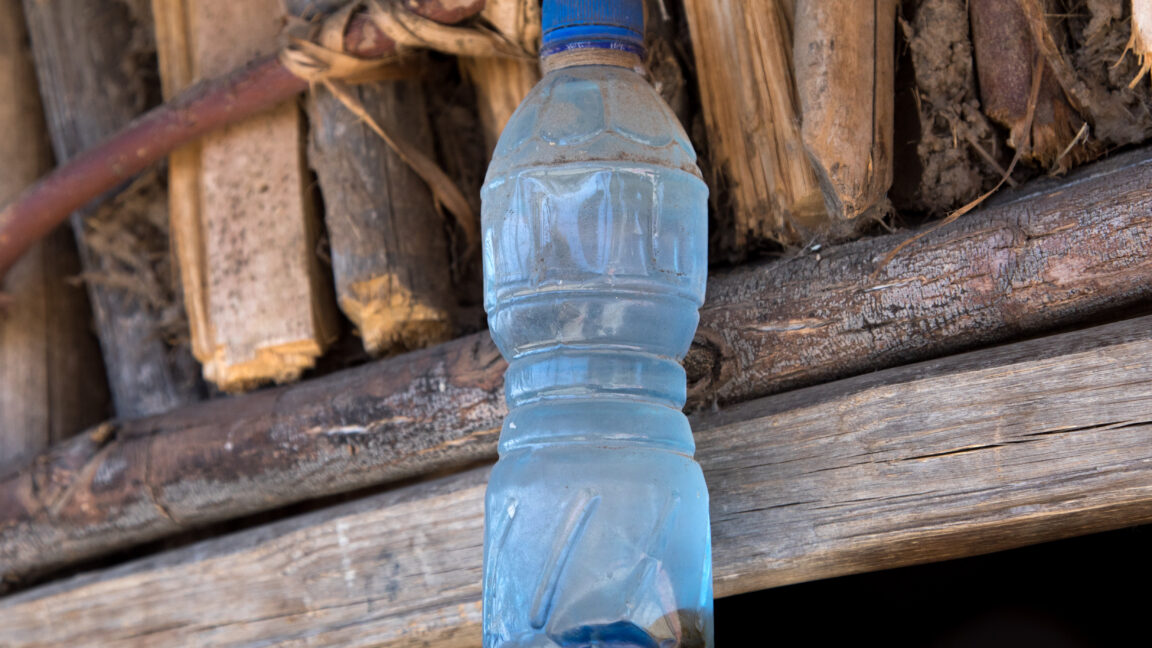Holy water brimming with cholera compels illness cluster in Europe
Holy sh*t
Holy water brimming with cholera compels illness cluster in Europe
Testing found that the holy water was "heavily contaminated."
Beth Mole
–
Apr 11, 2025 2:59 pm
|
8
Plastic bottle of holy water in Asheten mariam rock hewn church to bring luck and chase the bad spirits on January 20, 2017 in Lalibela, Ethiopia.
Credit:
Getty | Eric Lafforgue
Plastic bottle of holy water in Asheten mariam rock hewn church to bring luck and chase the bad spirits on January 20, 2017 in Lalibela, Ethiopia.
Credit:
Getty | Eric Lafforgue
Story text
Size
Small
Standard
Large
Width
*
Standard
Wide
Links
Standard
Orange
* Subscribers only
Learn more
European tourists who toted home bottles of water from a holy well in Ethiopia were likely hoping for blessings and spiritual cleansing—but instead carried an infectious curse and got an intestinal power cleanse.
Three people in Germany and four in the UK fell ill with cholera after directly drinking or splashing their faces with the holy water. Two required intensive care. Luckily, they all eventually recovered, according to a report in the journal Eurosurveillance.
The infections occurred in February after some of the patients reported taking independent trips to Ethiopia in January. Two of the German patients and three of the UK patients reported travel to the country, and several reported visiting a holy well called Bermel Giorgis (also spelled ‘Georgis’) in the Quara district. The German travelers and at least one of the UK travelers brought water home with them and shared it.
The well, named after Saint George, is considered a revered holy site by members of the Ethiopian Orthodox Tewahedo Church, who visit seeking "healing, spiritual clarity, and divine experiences," according to a travel site.
A bulletin from the European Center for Disease Prevention and Control noted that the well is in an area experiencing a cholera outbreak. But there is also armed conflict in the region, making public health interventions challenging. Given that the use of holy water is deeply rooted in the church and that samples are often gifted by returning travelers, the ECDC warns that "new cases may continue to occur until the source of contamination at the well has been addressed."
Whatever the source, it's a potent one, the Eurosurveillance report highlights. To get cholera, a person needs to be exposed to a hefty dose of the bacteria that causes it, Vibrio cholerae.
"As the infectious dose of V. cholerae O1 has been estimated to be 105–108 [100,000 to 100 million] colony-forming units (CFU), this suggests the holy water was heavily contaminated and bacteria remained viable at ambient temperature during the flight and in Europe," the German and UK researchers who authored the report wrote.
Global plague
Testing indicated that the cholera strain that the travelers brought home was a particularly nasty one. V. cholerae O1, which is linked to other recent outbreaks in Eastern and Middle Africa, is resistant to a wide variety of antibiotics, namely: fluroquinolones, trimethoprim, chloramphenicol, aminoglycosides, beta-lactams, macrolides, and sulphonamides. The strain also carried a separate genetic element (a plasmid) that provided resistance mechanisms against streptomycin and spectinomycin, cephalosporins, macrolides, and sulphonamides.
The main treatment for cholera, which causes profuse watery diarrhea and vomiting, is oral rehydration. Antibiotics are sometimes used to reduce severity. Fortunately, this strain was still susceptible to the antibiotic tetracycline, one of the drugs of choice for cholera. However, there are reports of other cholera strains in Africa that have also acquired tetracycline resistance.
In all, "The extension of a cholera outbreak in Africa causing a cluster of infections in Europe is unusual," the authors write. They call for travelers to be aware of infectious threats when eating and drinking abroad—and to not ingest holy water. Clinicians should also be aware of the potential of cholera in travelers to Ethiopia.
To truly fight cholera outbreaks, though, there needs to be sustained investment in water, sanitation, and hygiene (WASH). Cases of cholera have surged globally after the pandemic, according to the World Health Organization.
"Low-income countries will continue to need overseas development aid support to control outbreaks and epidemics using effective WASH, surveillance, communications, diagnostics and countermeasure programmatic delivery," the authors of the Eurosurveillance report write.
Beth Mole
Senior Health Reporter
Beth Mole
Senior Health Reporter
Beth is Ars Technica’s Senior Health Reporter. Beth has a Ph.D. in microbiology from the University of North Carolina at Chapel Hill and attended the Science Communication program at the University of California, Santa Cruz. She specializes in covering infectious diseases, public health, and microbes.
8 Comments


